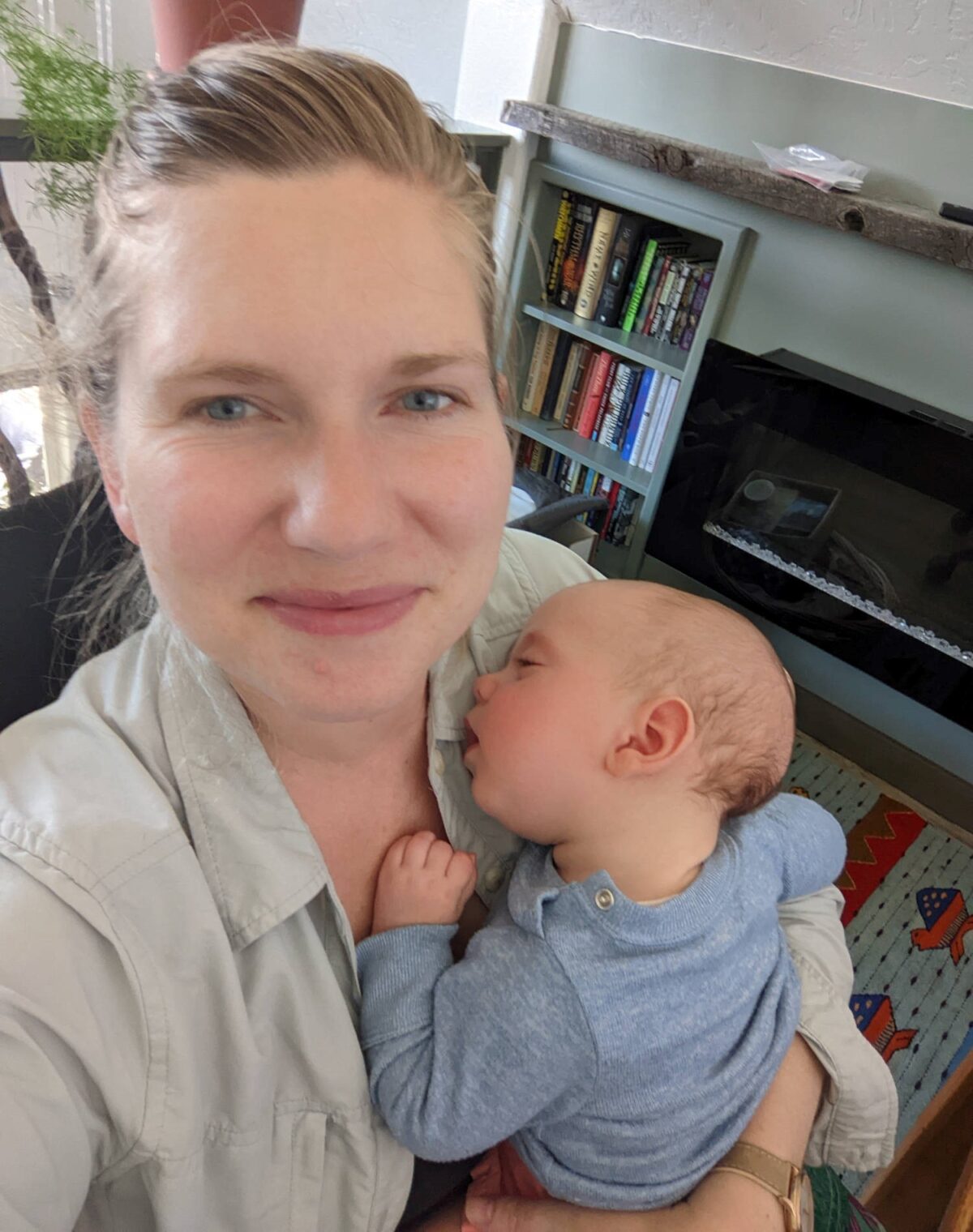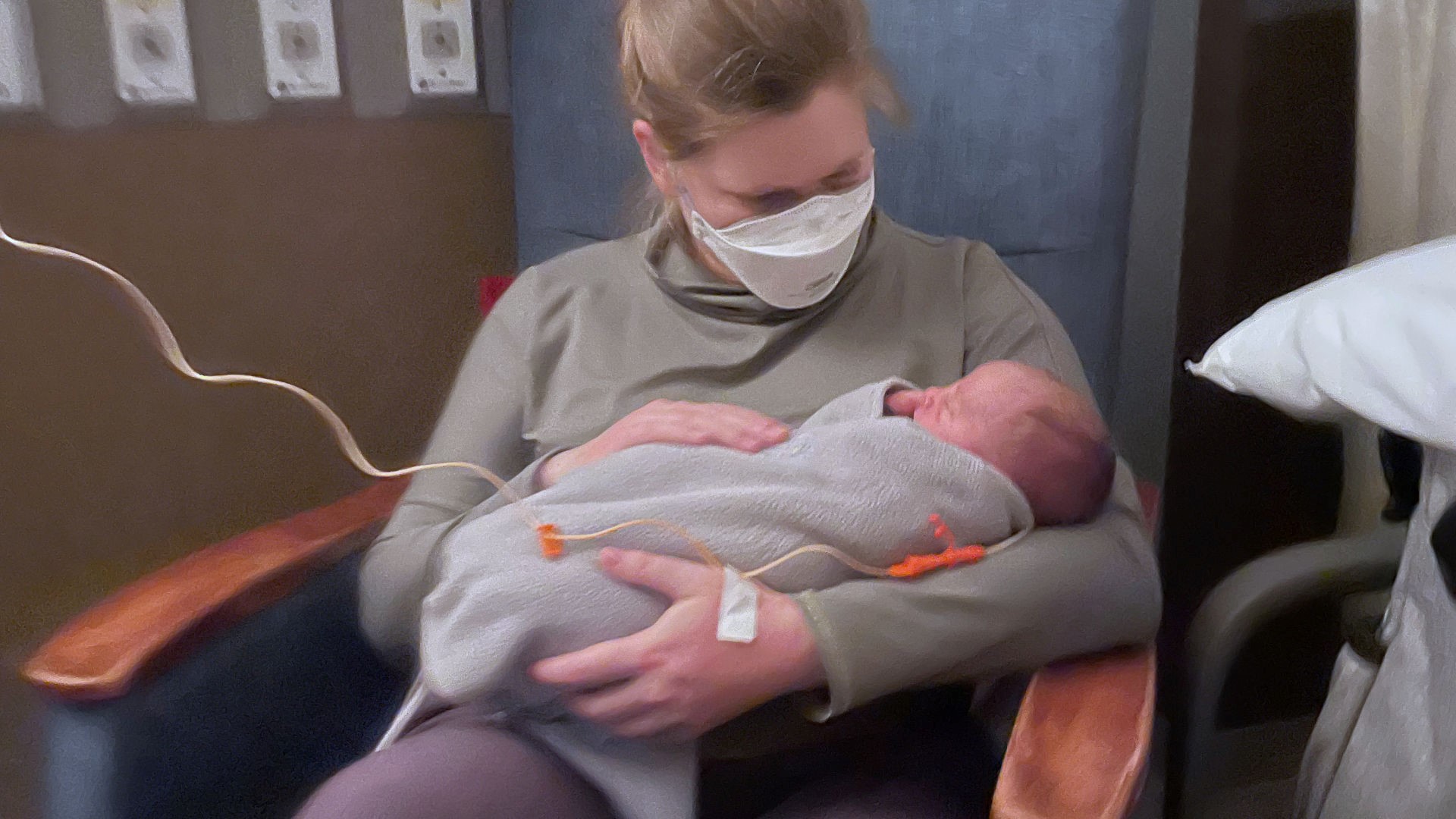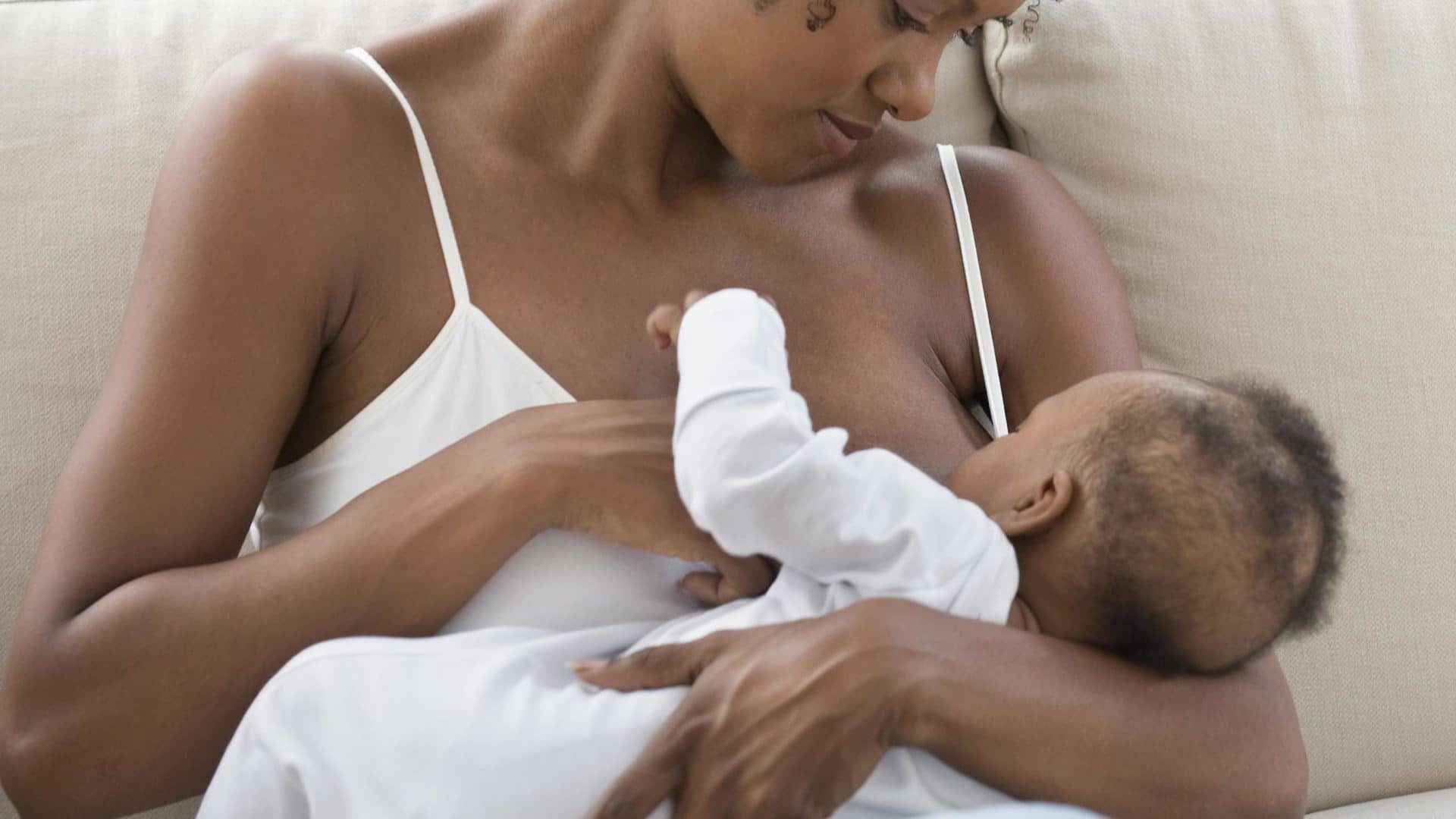New Mastitis Guidelines Give Breastfeeding Parents Whiplash
About four months after my son was born, I found a sore lump on the side of my breast. While worries of breast cancer flashed through my mind, I knew the more likely cause was the start of an ailment that affects up to a quarter of breastfeeding people: mastitis. I had already been warned by my OB-GYN and lactation consultants that my milk ducts could get clogged, inflamed, and then infected with bacteria, causing pain, redness, intense flu-like symptoms and, if not treated, an abscess. In rare cases, the infection can enter the bloodstream, a life-threatening condition called sepsis.
To prevent all that, I followed the conventional advice: apply heat, nurse or pump the breast frequently, and massage the clogged duct. Some women, like actress Kristen Bell, reportedly even enlist a partner to suck out a stubborn clog. Others drop $35 on hand-held massagers designed to loosen the build-up of milk. Instead, I used a hack I read about online: massage using the base of an electric toothbrush.
Then I stumbled on a Reddit post that upended my treatment plan. In mid-May 2022, just as I had begun breastfeeding, the Academy of Breastfeeding Medicine, or ABM, published new guidelines on mastitis management. And according to this new information, I was doing everything wrong. Instead of heat, massage, and extra nursing, the new guidelines suggest ice and resting the breast — which refers to abstaining from massage, and avoiding overpumping and overfeeding. For pain and inflammation, over-the-counter pain relievers have always been recommended.
According to Katrina Mitchell, a breast surgeon at the Ridley-Tree Cancer Center in Santa Barbara, California, and lead author on the new guidelines, the conventional wisdom was based on a poor understanding of breast anatomy and physiology. A dearth of research on human lactation — yet another example of sexism in biomedicine — meant that widely-touted advice for mastitis was based primarily on anecdotes, rather than high-quality science, Mitchell told me.
But not everyone agrees that the new guidelines are any more rooted in science than the previous advice. Carmela Kika Baeza, a Spanish doctor specializing in breastfeeding medicine, co-authored a letter in late 2022 that laid out concerns over the ABM’s 180-degree-turn on mastitis. “What this protocol is doing is giving us a lot of hypotheses which are untested,” she told me, “and offering them like they are the treatment that we should now use.”
The rates of mastitis in humans are not well-known, clocking in between 3 and 25 percent depending on who you ask. The ailment may even cause people to quit breastfeeding earlier than they’d planned, particularly if they have repeat bouts: From the two relevant peer-reviewed studies I could find, that figure was about 3 to 6 percent in the first year.
So what, I wondered, should I do if I get another lump while I’m breastfeeding?
For most people, breastfeeding or chestfeeding starts with the birth of their baby. After delivery of the placenta, rapid hormonal changes kickstart milk production. Inside the breasts, fine milk ducts interweave, meandering from small sacs where milk is created and stored, called mammary alveoli, to a larger ductal system, and finally to pores at the nipple. When a baby starts nursing, the stimulation of the nipple (or the mother’s conditioned response) causes the brain to secrete the hormone oxytocin, which travels to the breast and triggers milk to release from alveolar cells to the milk ducts.
Rather than this basic physiology, the previous mastitis guidelines were based on “just decades of people kind of applying what they would imagine in terms of the way the breast works,” said Mitchell.
Mastitis is usually attributed to one of two things. The first, milk stasis, happens when milk stays in the breast too long. If the alveolar sacs expand too much, it is thought that components of the milk can leak into the bloodstream, causing system-wide inflammation and the resulting fever, chills, and malaise. Many women feel this swelling of milk as a hard spot or lump on the breast, often referred to as a clogged or plugged duct. The second purported cause of mastitis happens when pathogenic bacteria enter the milk ducts — perhaps through a cracked or bleeding nipple — causing an infection.
Previous guidelines offered the same set of solutions for both problems: Remove milk from the breast by breastfeeding or pumping more frequently. Apply heat to dilate the ducts, allowing milk to flow more easily. Massage to help push the milk through the ducts.
Lindsay Smith, a nursing mom who lives near Boise, Idaho, who also saw ABM’s new protocol being discussed on Reddit, said that when she sought help for mastitis from an obstetrician, the doctor told her that milk stasis was “like cheese, so you have to heat it as hot as physically possible in order to melt the cheese for it to come out.”
Similarly, Tracy Davey, a nurse and international board certified lactation consultant at a private practice in Australia, said she was told in her training that milk ducts are like a tube of toothpaste, and clogged ducts need to be squeezed out.
But according to Mitchell and the new ABM protocol, basic facts about the physiology and anatomy of the breast render these ideas impossible. Although studies do exist to support the old methods, Mitchell said they are confounded and cannot show causation. Part of the problem, she added, is that they don’t start with an understanding of breast anatomy. The new protocol, Mitchell said, is largely based on surgical knowledge about glands and fluid management. “It’s basically textbook,” Mitchell told me, but that such basics were “completely missing from lactation care.” Other breast experts support the approach. “It’s a new way of applying information we already had, to a corner of the medical world that no one was looking at,” said Texas-based breast surgeon Sangeetha Kolluri.
Mitchell agreed that problems can start when there’s a lot of milk in the breast, and that milk leaking through overfull alveoli is a component of the inflammatory response. But she stressed that a buildup of fluid, or edema, around the alveoli and milk ducts causes those ducts to narrow, also resulting in inflammation, and the feeling of a plug. In the lactating breast, which has increased blood flow, local inflammation can advance to system-wide symptoms like fever. The excess fluid, Mitchell said, can also redden the skin.
The solution, Mitchell said, isn’t to constantly remove milk from the breast, because it is a gland built on feedback inhibition. In other words, milk production is based on demand — when milk is removed production goes up, and when milk sits around it goes down. When inflammation occurs in this system, an increase in milk production may also increase inflammation. By this logic, removing milk more frequently than a baby is nursing can make mastitis worse. For “every other organ it’s very obvious to us that if there’s a problem, you need to give it some rest,” said Mitchell.
Although heat on the breast isn’t usually harmful, it might not help. Rather, it can exacerbate inflammation by increasing the blood flow. Instead, icing the area is recommended because it restricts blood flow and reduces inflammation — the same way you would treat a sprained ankle.
But the worst part of the previous advice, according to Mitchell, is the rough handling of the breast through massage. This, she told me, is what can advance inflammation into infection, because infection only happens when there is cell death: “Massage is what causes the capillary injury, the cell death, that then provides a ripe environment for bacteria to — in that situation — overgrow.”
Critics of the new ABM protocol argue that mastitis is a condition that the medical community has managed effectively for many years. With the old protocol, said Baeza, co-author of the response letter, the condition resolves quickly in about 85 percent of people. The other 15 percent are prescribed antibiotics. “It’s an ages old treatment that’s been working,” she said. “That’s what all the reviews and all the studies say.”
A 2020 Cochrane review did find some evidence that breast massage may be better than routine care for preventing mastitis. But the review concluded the most effective preventative measures are not known due to bias, small study sizes, and large differences in treatments that make comparisons difficult. Baeza and her co-authors also cited an observational study on breast massage in their response letter, which showed that in a group of 42 women, a specific type of gentle message did help to manage their mastitis and associated pain. And Baeza pointed to studies showing that heat and massage help to remove milk from the breast effectively, which she still contends is neccessary to manage mastitis.
Another 2020 review found that nipple damage was consistently associated with mastitis — supporting the view that infection may involve the nipple — but concluded that the quality of studies investigating the causes of mastitis was low. Lenka Benova, a co-author of that review, noted that high-quality studies on mastitis are challenging because they need to be prospective — repeatedly asking women about risk factors and symptoms before they develop mastitis. “Imagine having to follow 500 women for six months, asking them the same question weekly or monthly” she told me. “It’s going to get expensive.”
According to Mitchell, surgical training dictates that damage to the nipple is unlikely to cause mastitis. “If you get a cut on your nipple, it doesn’t mean you’re going to get some kind of overwhelming deep organ space infection,” she said. “Infection’s a lot more complicated than that.”
In some cases, Baeza added, women are indeed told to nurse and pump too frequently, which triggers overproduction, causes more milk stasis, and may lead to mastitis. And, Baeza added later by email, because the U.S. doesn’t guarantee paid parental leave, it may be more common for parents in the U.S. to use breast pumps. This certainly seemed to be the case for two of Mitchell’s patients that I spoke with, both of whom said that before they sought care from Mitchell, other health care providers instructed them to pump often to keep the breast “empty.” One told me she was prescribed antibiotics for mastitis at least 16 times, and another said she was hospitalized for sepsis and separated from her 9-week-old during the initial Covid-19 wave.
Older messaging on heat versus cold applications may be a miscommunication. Lisa Amir, an Australian breastfeeding medicine physician and researcher, and author of the 2014 ABM protocol on mastitis, pointed out that her version did recommend placing something cold on the breast, while 2000 guidelines from the World Health Organization also briefly suggested using cold for pain relief.
And both Amir and Baeza stressed that the previous guidelines do not, in fact, recommend a deep massage — although, based on my research and my own battle with mastitis, this rough treatment is often how it goes in practice.

Amanda and her son at home a few weeks before her bout with mastitis.
Visual: Courtesy Amanda Grennell
Still, Baeza said, the new guidelines are far out of line with longstanding research. “If you propose that the new way of managing mastitis is doing nothing,” she said, “then you need a little bit of science to back that up, because that’s a big change.”
There are also some new treatments proposed in the 2022 protocol, Baeza pointed out, which don’t appear to come from Mitchell’s back-to-the-basics approach. For instance, the new guidelines say to consider therapeutic ultrasound to reduce inflammation and swelling, probiotics (possibly to balance microbial populations), and lecithin as a dietary supplement to keep the components of breastmilk well mixed, all of which are based on a limited number of studies. “There’s not evidence behind that,” Baeza said. “As a doctor, I can’t tell my patients to buy those things.”
Despite the dissent, everyone agrees on a couple of things: Managing mastitis needs to be simple and inexpensive; antibiotics are overprescribed; and there isn’t nearly enough research on mastitis, or breastfeeding in general.
My bout with mastitis turned out to be like a mild flu, but with moderate breast pain and looming anxiety about sepsis. After a short course of antibiotics, it has yet to return. But if it does, I think I’ll start by reaching for an icepack (now on standby in my freezer), pop an ibuprofen, and retire my electric toothbrush massager.
Amanda Grennell is a senior editor at Undark.











